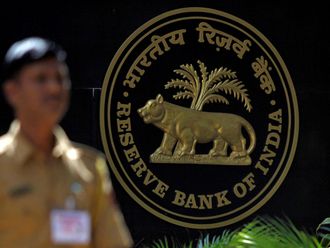London: Sterling climbed to the highest level in almost four months this week, amid speculation investors had overestimated prospects of Britain leaving the European Union after the June 23 referendum. In order to survive, the rally may need more signs that a clear shift has emerged.
The pound advanced this week, completing its first back-to-back monthly gains versus the dollar since 2013, as investors overlooked weaker UK economic data and focused instead on survey results that suggested the “remain” vote had taken the lead. Traders may get more insight into voting intentions next week as Britain holds local elections, while further opinion surveys are also expected.
“The closer we get to the referendum, the more it will dominate” sterling moves, said Adam Cole, head of global foreign-exchange strategy at Royal Bank of Canada in London. The risk is that the currency’s rally “reverses if the polls in the coming days don’t support the shift in exit sentiment. We need more news now to keep the pound recovery going.”
At the same time “markets will be alert to any exit-risk impact on confidence” from survey-based economic data next week, Cole said. Data Friday indicated consumer confidence dropped to the lowest in more than a year.
Construction, services data
A report on May 3 will show construction growth slowed this month from March, according to analyst estimates before the data from CIPS and Markit Economics. Two days later, a report will say UK services output measured by Markit’s Purchasing Managers Index fell in the same period, economists surveyed by Bloomberg forecast.
The pound advanced 1.5 per cent this week to $1.4623 as of 5pm London time Friday, having touched $1.4670, the highest since January 6. Even as it slipped 0.4 per cent to 78.22 pence per euro since April 22, the pound posted its first monthly gain since November versus the shared currency.
With the “remain” camp gaining traction since the referendum campaigns started on April 15, the UK’s currency strengthened. It has appreciated against most of its 16 major peers this month. In February, sterling skidded to a seven-year low versus the dollar days after date of the vote was announced.












